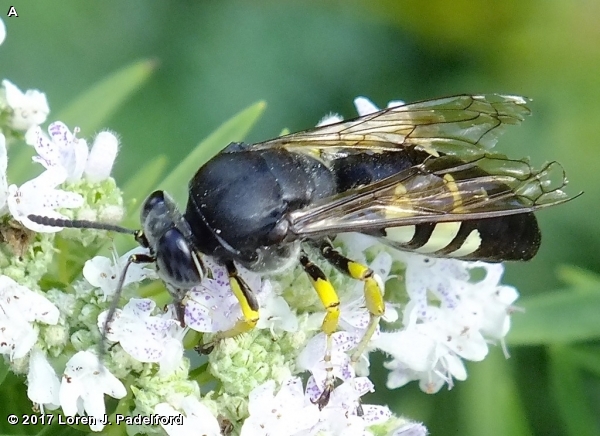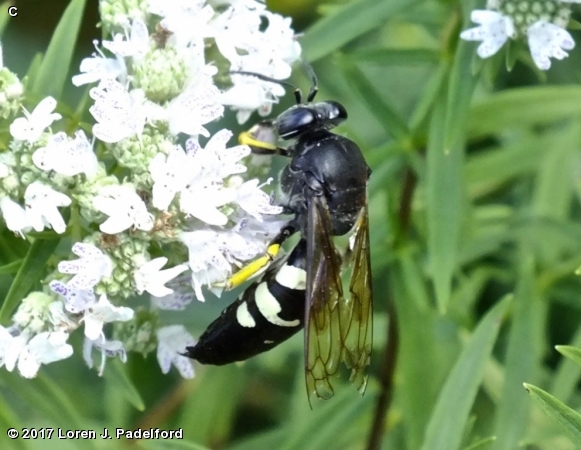
A large wasp, about 1.25 inches (30 mm) long similar in appearance to Eastern Cicada Killer. The Horse Guard is slightly smaller with yellow and black legs. The thorax is black, eyes are black, antennae are black. Wings are lightly tinted brown.
The normal range for this large wasp is generally east of the Rocky Mountains and north to Pennsylvania. It is probably uncommon in Fontenelle Forest and Neale Woods. The individual shown was photographed in the restored butterfly garden in the Fontenelle Forest wetlands in August 2017.
The Horse Guard Wasp gets its name from its behavior of patrolling around horses and cattle for its primary prey of horse flies. The adult female digs a multichambered nest in sandy soil where she lays one egg in each chamber. She then provisions each chamber with horse flies as needed by the growing larva (may require as many as 35 flies). The mature larva pupates in the nest chamber and emerges as an adult. Stockmen, in the know, appreciate the important pest control provided by this wasp. “Cow Killer” velvet ants (Dasymutilla occidentalis) are known to parasitize the larvae of Horse Guard just as they do Eastern Cicada Killer. There are three species in the genus Stictia, with many more (up to 28) in the tropics.
The content of NatureSearch is provided by dedicated volunteer Naturalists of Fontenelle Forest who strive to provide the most accurate information available. Contributors of the images retain their copyrights. The point of contact for this page is: Loren Padelford.


